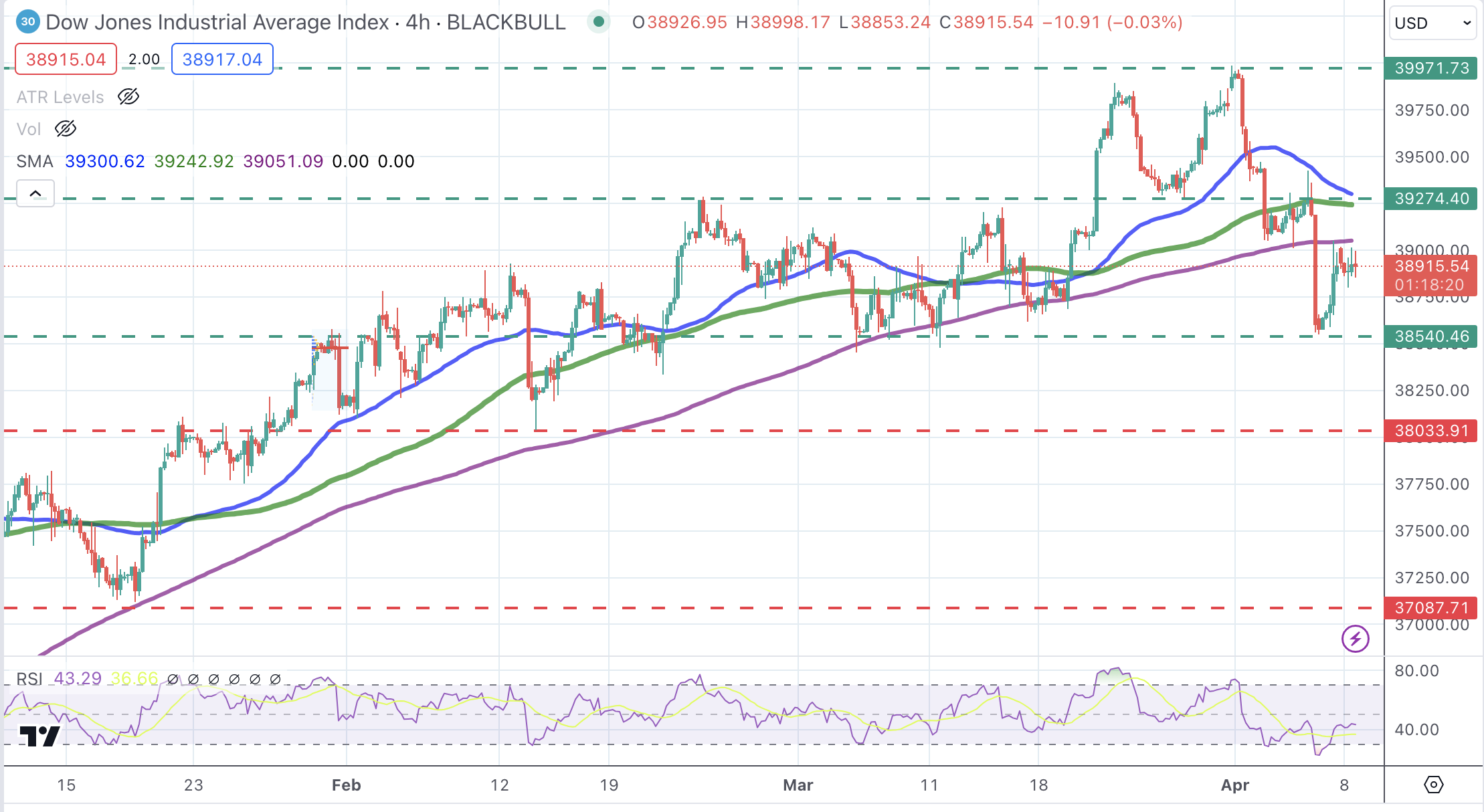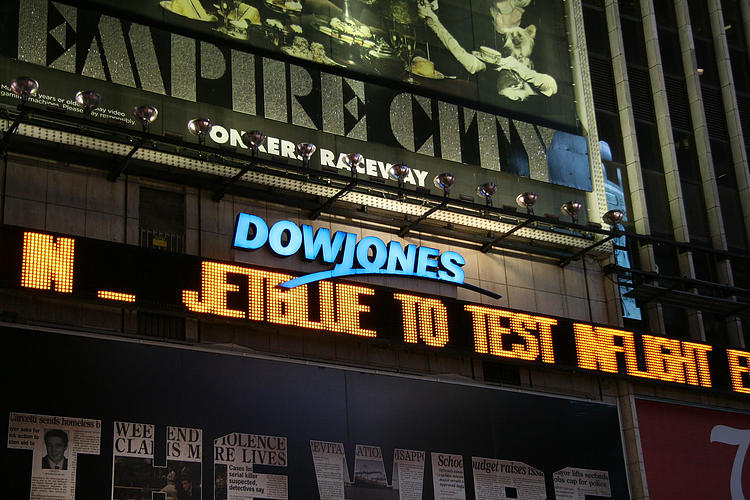- Wall Street opens the week with marginal gains with investors relieved by decline in Oil prices.
- Dow Jones treads water near 39,000 level as rebound from Friday’s high stalls.
- Bias remains skewed to the downside with all eyes on Wednesday’s US CPI figures.
The Dow Jones Industrial Average (DJIA) has opened the week with minor advances, favoured by some risk appetite. Oil prices have retreated from multi-month highs as tensions in the Middle East ease somewhat, which has provided some relief to equity investors on Monday.
The market, however, is in a wait-and-see mode with traders reluctant to take excessive risks ahead of Wednesday’s US Consumer Prices Index data. US Inflation is expected to have accelerated to 3.4% in March from the 3.2% yearly rate in February, although core CPI is seen cooling to 3.7% from a 3.8% annual reading in the previous month.
All the main Wall Street indices are positive on Monday. NASDAQ is leading with a 0.14% advance to 16,271, the S&P 500, is 1.2% above opening levels, at 5,210, and the Dow Jones gains less than 0.1% at 38,928.
Dow Jones news
Down to sectors, Consumer Discretionary is leading gains with a 0.8% advance, followed by Real Estate, which is up 0.5%. At the bottom of the ranking on Monday is the Health sector, dropping by 0.48%, and Technology, 0.25% below Friday’s close.
Nike (NKE) is the best Dow performer on Monday with a 1.42% increase to $90.11, followed by 3M (MMM) gaining 0.97% to $91.90. On the losing end, Intel (INTL) leads losses with a further 1.6% decline to $38.05, followed by Merck (MRK), 1.5% down to $126.02.
Dow Jones technical outlook
The Dow Jones index is trading practically flat with oscillators showing a lack of clear direction. The DJIA is still in a bearish correction from the 39,986 historic high hit in late March.
The recovery attempt from Friday’s lows has stalled below previous lows, at the 39,000 area, and with a supply zone at the 39,250 area likely to offer significant resistance. On the downside, the 38,540 level is still in play and might be revisited if US CPI posts a positive surprise on Wednesday. Below here, 38,035 would be exposed.
Dow Jones Index 4-Hour Chart

Dow Jones FAQs
The Dow Jones Industrial Average, one of the oldest stock market indices in the world, is compiled of the 30 most traded stocks in the US. The index is price-weighted rather than weighted by capitalization. It is calculated by summing the prices of the constituent stocks and dividing them by a factor, currently 0.152. The index was founded by Charles Dow, who also founded the Wall Street Journal. In later years it has been criticized for not being broadly representative enough because it only tracks 30 conglomerates, unlike broader indices such as the S&P 500.
Many different factors drive the Dow Jones Industrial Average (DJIA). The aggregate performance of the component companies revealed in quarterly company earnings reports is the main one. US and global macroeconomic data also contributes as it impacts on investor sentiment. The level of interest rates, set by the Federal Reserve (Fed), also influences the DJIA as it affects the cost of credit, on which many corporations are heavily reliant. Therefore, inflation can be a major driver as well as other metrics which impact the Fed decisions.
Dow Theory is a method for identifying the primary trend of the stock market developed by Charles Dow. A key step is to compare the direction of the Dow Jones Industrial Average (DJIA) and the Dow Jones Transportation Average (DJTA) and only follow trends where both are moving in the same direction. Volume is a confirmatory criteria. The theory uses elements of peak and trough analysis. Dow’s theory posits three trend phases: accumulation, when smart money starts buying or selling; public participation, when the wider public joins in; and distribution, when the smart money exits.
There are a number of ways to trade the DJIA. One is to use ETFs which allow investors to trade the DJIA as a single security, rather than having to buy shares in all 30 constituent companies. A leading example is the SPDR Dow Jones Industrial Average ETF (DIA). DJIA futures contracts enable traders to speculate on the future value of the index and Options provide the right, but not the obligation, to buy or sell the index at a predetermined price in the future. Mutual funds enable investors to buy a share of a diversified portfolio of DJIA stocks thus providing exposure to the overall index.
